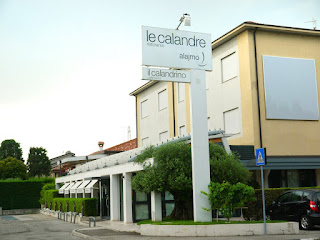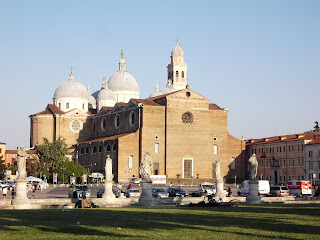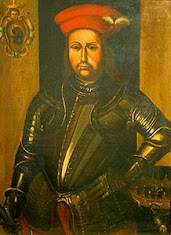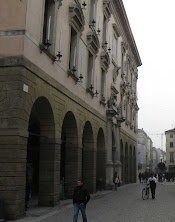Colaratura mezzo-soprano noted for velvety softness of agile voice
 |
| Lucia Valentini Terrani in 1982: The singer had a powerful stage presence as well as a brilliant voice |
Equally at home in contralto roles, she was among the most notable interpreters of the 18th and 19th century bel canto repertoire and was a major influence on the way the Gaetano Rossini repertoire evolved over the last three decades of the 20th century.
After her debut in 1969 and breakthrough in 1973, Valentini Terrani sang at most of the world’s major opera houses, in South America and Russia as well as Europe and the United States.
Little is known about her early life in Padua before she attended the city’s Cesare Pollini Music Conservatory. From there she moved to the Benedetto Marcello Conservatory in Venice, where she was a student under the former soprano Iris Adami Corradetti.
There, she laid the foundations for her career. At that point, she performed as Lucia Valentini, making her debut in 1969 in Brescia as Angelina in Rossini’s La Cenerentola, a role that would become her signature.
With its demanding coloratura and nuanced comedy elements, La Cenerentola showcased Valentini’s vocal brilliance but also her theatrical finesse.
Following her triumph in the International Competition for New Rossini Voices organised by the broadcaster Rai in 1972, her big breakthrough came in 1973, again in La Cenerentola, this time at Teatro alla Scala in Milan. Stepping in for Teresa Berganza, one of the most popular and admired mezzo-sopranos of the modern era, Valentini reprised the Angelina role to great acclaim. The performance effectively launched her international career.
 |
| Alberto Terrani said he was "spellbound by the beauty of her face" when they met |
They fell in love and were married in 1973, at which point he gave up his own career to become her manager and she added his name to hers
Valentini Terrani’s artistry was deeply entwined with Rossini’s music. She mastered both his comic heroines and his more florid, serious roles, such as Arsace in Semiramide, Tancredi, and Malcolm in La donna del lago.
The last three were so-called “trouser roles”, in which a male character is sung by a female singer. Valentini Terrani’s versatile, expressive and richly coloured voice allowed her to perform such roles with convincing masculinity and emotional depth.
Yet her repertoire was not limited to Rossini and his genre. She also ventured into baroque opera, portraying Medea in Cavalli’s Giasone, Dido in Purcell’s Dido and Aeneas, and Bradamante in Handel’s Alcina, as well as dramatic and lyrical roles such as Eboli in Don Carlos, Carmen, Charlotte in Werther, and Quickly in Falstaff.
Her international engagements took her to the Metropolitan Opera (debuting in 1975 as Isabella in L’italiana in Algeri), Covent Garden, Paris, Moscow, Buenos Aires, and beyond.
 |
| Valentini Terrani's career was cut short after she was diagnosed with leukemia |
Valentini Terrani’s career was cut short when she was diagnosed with leukemia in 1996. Encouraged by her friend and fellow opera singer José Carreras, who had recovered from the disease, she travelled to the Fred Hutchinson Cancer Research Center in Seattle, where he had been treated successfully. Sadly, though, she died there in 1998 aged just 51, following complications from a bone marrow transplant.
Her legacy endures not only in recordings and memories but also in Padua, where a square near the Teatro Verdi bears her name. There is also a small hotel in Padua, supported by charity, to accommodate hospital visitors and patients in need of repeated treatment, named the Casa di Accoglienza Lucia Valentini Terrani.
It was inspired by an act of generosity by the singer shortly before she died in Seattle, when she was so dismayed to find that the relatives of fellow patients were sleeping in their cars because accommodation was so expensive that she asked her husband to pay for their hotel rooms.
 |
| The Basilica di Sant'Antonio, with its Byzantine domes |
Lucia Valentini Terrani’s home city of Padua, in Veneto, has a population of around 217,000. It is rich in history, art and architectural treasures. The biggest attractions for visitors include the Scrovegni Chapel, a medieval gem that houses a fresco cycle by Giotto often cited as the dawn of Renaissance painting; the Basilica of Saint’Antonio, notable for its Byzantine-style domes, that houses the relics of St. Anthony and features masterpieces by Donatello; the Palazzo della Ragione, once the seat of Padua’s medieval government and today a civic building with a bustling food market on the ground floor, the elegant Piazza dei Signori, with its beautiful Renaissance clock tower; and Prato della Valle, a vast oval space, built on the site of a former Roman amphitheatre and one of Europe’s largest public squares, which features statues of historic figures around a central island.
 |
| Brescia's Roman heritage is visible in the ruins of the Tempio Capitolino in Piazza del Foro |
Brescia, where Valentini Terrani made her public debut, is a city in Lombardy midway between Bergamo and Verona often described as an underrated cultural gem, a mix of Roman and medieval heritage. The Santa Giulia Museum, housed in a former monastery and a UNESCO World Heritage, showcases Roman villas, medieval frescoes, and treasures such as the Desiderius Cross, while Brescia’s ancient heart includes the Capitolium Temple and Forum and other Roman remains that date back to 73AD. Perched on the Colle Cidneo, with panoramic views over the city, is the well-preserved Castello di Brescia. In the centre of the city, the Piazza della Loggia is a Renaissance square with an astronomical clock and elegant arcades, while the Piazza Paolo VI is home to two cathedrals - the Duomo Vecchio and the Duomo Nuovo, bringing together Romanesque and Baroque styles side by side.
Search for accommodation in Brescia
Also on this day:
1875: The birth of flautist Leonardo De Lorenzo
1941: The birth of artist and designer Ugo Nespolo
1967: The birth of Tiziana ‘Tosca’ Donati
1991: The Mafia murder of Palermo businessman Libero Grassi











.jpg)






.jpg)
%20(2).jpg)
.jpg)



.JPG)






.jpg)